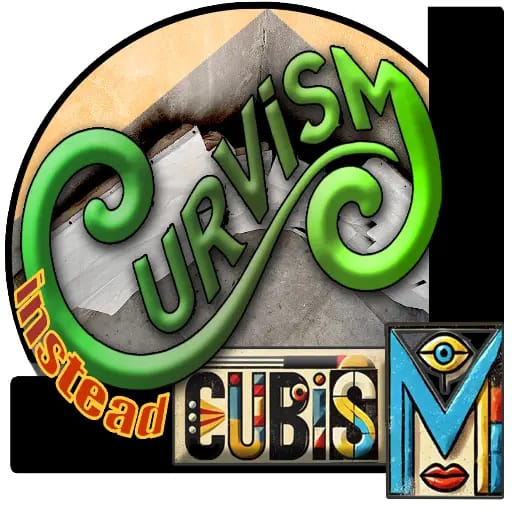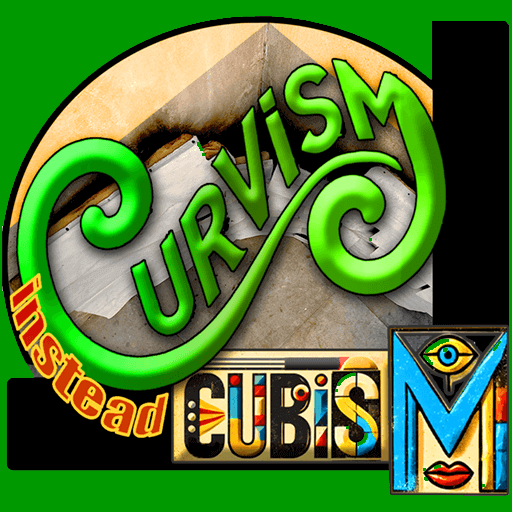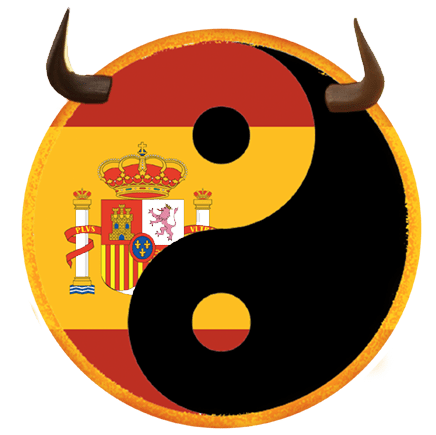
Look how fascinating this is:
From the far reaches of Asia to the lands of Oceania, passing through Africa, Europe and America, from the dawn of humanity to this very moment, round and oval dwellings have withstood the test of time like a silent echo of our essence. Meanwhile, cubic and rectangular shapes—those we consider “normal” today—burst onto the scene much later, barely in the last few thousand years. Great cultures like the Mexicas, Mayans, Egyptians and Mesopotamians were already previously subjugated by what we know as Euclidean geometry. But what if I told you that those sharp corners and edges hide something unsettling? This is no laughing matter: rounded walls barely whisper psychological complaints, as if they were a forgotten refuge for the mind. In contrast, the corners of cubic rooms—those surrounding you right now—are conspiring against your calm, loaded with a tension you don’t see but feel. We could imagine that negative sensations toward corners arose from mystical or spontaneous visions, but the reality is that their persistence through time and across all human races and other animal species goes beyond mere hallucinations. Those who have lived their entire lives between straight walls may feel strangeness when stepping into a curved space, as if right angles had domesticated us without our noticing. After analyzing this table, I challenge you to look at the four corners of your room without asking yourself: what are they doing to me? Thousands of years of history scream that there’s more to those shapes than you ever imagined. Do you realize it’s time for curvism again? 🫵🏽 MOVE THE TABLE HORIZONTALLY and VERTICALLY.
| Culture | Name of the Negative Energy | How They Discovered These Were Evil Spaces | Cleansing Practices |
|---|---|---|---|
| Feng Shui (China) | Sha Qi (煞气) (cutting or harmful energy) | They noticed that sharp corners and dark areas caused discomfort, conflicts, or illnesses. | Mirrors, plants, lighting, moving water. |
| Taoism (China) | "Gui" (ghosts or stagnant energy) | They observed that cluttered spaces or those full of objects attracted wandering souls or blocked the flow of "Qi". | Bells, incense, talismans (such as peach wood swords), furniture arrangement to harmonize the "Qi". |
| Tibetan Buddhism | "Drekpa" (spiritual contamination in corners) | Monks noticed that dark or neglected corners in gompas or rectangular houses attracted lesser spirits, causing disturbances or illness. | Burning juniper incense in the corners, reciting mantras (e.g., "Om Mani Padme Hum"), placing prayer flags. |
| Xiongnu (northern steppes, Russia) | "Qutugh" (spiritual corruption, approximate term) | While inhabiting captured Chinese settlements, shamans noticed that dark or poorly ventilated corners attracted evil spirits or "air diseases". | Chants and drumming directed at the corners, sprinkling water with ashes, avoiding storing objects in corners. |
| Kipchaks/Cumans (Russian and Ukrainian steppes) | "Yaman ruhlar" (evil spirits in Turkish) | In occupied Russian churches and houses, they felt that corners retained spirits or hostile energies, linked to bad luck or illness. | Burning dried dung or herbs, protective stones, rituals with bows and arrows. |
| Mongols | "Trapped evil spirits" or "Buyan-iin khüch" (corrupt force) | While conquering sedentary regions, they observed that corners accumulated heavy energies or restless spirits, causing illness or discord. | Juniper or mugwort smoke, drumming, offerings of milk or vodka in the corners. |
| Sarmatians (Russian and Caspian steppes) | "Dark forces at the edges" (inferred term) | In captured settlements or Roman fortifications, they perceived corners as accumulators of shadows or stagnant energies. | Burning herbs (sage), metal or bone amulets, fire rituals. |
| Sami (Scandinavia and Russia) | "Stallo" or trapped spirits | Their conical lavvus felt free; colonial rectangular houses felt oppressive and retained evil spirits. | Yoik chants, reindeer offerings in the corners. |
| Alans | "Arwah-i bad" (evil spirits, approximate term) | While occupying Byzantine or Russian rectangular houses, they noticed that dark corners generated oppression or illness. | Burning herbs (sage or juniper), chants or drumming, amulets in the corners. |
| Pechenegs | "Kara Ruhlar" (dark spirits) | In Russian or Byzantine rectangular houses, they observed that corners accumulated dead energies or hostile spirits. | Burning dung or herbs, symbolic bows and arrows, chants to Tengri, offerings of milk or vodka. |
| Scythians (Russian and Ukrainian steppes) | "Wandering souls in angles" | They noticed that Greek rectangular houses trapped spirits of the dead or hostile forces. | Animal sacrifices (horses), sprinkling blood or milk in the corners. |
| Khazars | "Stagnant spirits" or "Kötü Ruhlar" | While occupying conquered cities, they noticed that corners caused discomfort or negative events. | (Not specified in this version; suggested: chants, smoke). |
| Vastu Shastra (India) | Vastu Dosha (energy imbalance) | They observed that certain house designs brought misfortune and health problems. | Sacred fire (Havan), yantras, reorientation of furniture, specific colors. |
| Thai Culture (Theravada Buddhism) | "Phi Tai Hong" (vengeful spirits in corners) | Monks and villagers observed that dark corners accumulated spirits of violent deaths. | Offerings of food or flowers, Buddhist sutras, amulets. |
| Shintoism (Japan) | Kimon (鬼門, "Demon Gate") | They identified specific directions (northeast) as prone to negative spirits. | Purification with water (Misogi), sakaki branches, offerings at shrines. |
| Ainu (Japan/Russia) | "Evil Kamui" | Traditional houses had no right angles; modern Japanese houses felt disruptive. | Prayers to Kamuy, cleansing with willow branches. |
| Zoroastrianism (Ancient Persia) | "Druj" (impurity or corruption) | They believed that dirty or stagnant corners could be inhabited by daevas. | Sacred fire, cleansing with pure water, exposure to sunlight. |
| European Geomancy | Evil nodes and ley lines | They noticed that certain places were prone to illnesses and accidents. | Protective symbols, salt, relocating buildings. |
| Inuit (American Arctic, Greenland, Russia) | "Spirits trapped in angles" | Corners blocked the flow of spirits, causing oppression or poor hunting. | Throat singing, amulets, ventilation. |
| Cherokee (North America) | Stagnant energy in corners | Dark corners caused discomfort or visions, unlike rounded houses. | Sacred tobacco, chants, keeping corners clean. |
| Navajo (North America) | "Chindi" (trapped spirits of the dead) | Their circular hogans were free; colonial rectangular houses accumulated chindi. | Burning cedar, chants to expel spirits. |
| Andean Shamanism | Jucha (heavy energy) | They believed that enclosed and dark places accumulated negative spirits. | Smoking with herbs, drum and conch sounds. |
| Shipibo-Conibo (Amazon) | Yacuruna in corners | Corners accumulated heavy, damp energies linked to evil spirits. | Icaros, palo santo, clearing corners. |
| Mapuche (Southern Cone, Argentina and Chile) | Wekufe in angles | Machi noticed that in rectangular houses, corners accumulated sticky energies. | Kultrun drums, smoking with canelo, avoiding storage in corners. |
| Mexica (Mesoamerica) | "Mictlan in corners" (underworld influence) | In temples and homes, dark corners attracted energies from Mictlan. | Burning copal, ritual sweeping, offerings (flowers or jade). |
| Maya Culture | "Xibalba" (underworld influence) | Dark corners or misaligned buildings were connected to the underworld. | Burning copal, offerings of blood or food, altars. |
| Celtic Tradition | Shadowy places or "broken spaces" | They avoided sites with bad energetic sensations. | Consecrated water, fire, stone circles. |
| Hoodoo/Voodoo (African American) | Crossroads energy (trapped energy) | They believed that corners and crossroads attracted wandering entities. | Protective powders, chalk symbols, prayers, oils. |
| Islamic Beliefs | Jinn in dark corners | They said Jinn inhabited dirty and poorly ventilated spaces. | Recitation of the Quran, holy water (Zamzam), incense. |
| Bedouins (Middle East) | Jinn in corners | Curved tents allowed spiritual flow; rectangular houses trapped jinn. | Reciting Quran verses, salt in corners. |
| Ancient Egypt | "Isfet" (chaos or energetic disorder) | They believed that misaligned spaces attracted chaotic forces opposed to "Maat". | Incense (myrrh or kyphi), alignment with cardinal points, Nile water. |
| Yoruba Culture (West Africa) | "Ajogun" (destructive forces) | Neglected corners were seen as portals for hostile entities. | Offerings to Orishas, herbs (basil), drums. |
| Zulu Culture (Southern Africa) | "Angry Amadlozi" (disturbed ancestors) | In colonial houses, corners trapped ancestral energy, causing disharmony. | Burning imphepho, chants, water with ashes. |
| Dogon Culture (Mali) | "Unbalanced Nommo" (stagnant spiritual energy) | In rectangular houses, corners accumulated heavy energy. | Mud markings, millet offerings, ritual dances. |
| Akan Culture (Ghana) | "Sasa" (vengeful spirits in corners) | They noticed that corners attracted unappeased spirits. | Palm wine libations, protective herbs, ritual stools. |
| Berber Culture (North Africa) | "Jnun in corners" (evil spirits) | In kasbahs and rectangular houses, dark corners were inhabited by Jnuns. | Myrrh or amber incense, protective verses, salt. |
| Khoisan (Southern Africa) | "Restless spirits in corners" | Temporary curved shelters; colonial houses were linked to illnesses and disharmony. | Trance dances, herbal smoke. |
| Swahili Culture (East Africa) | "Shetani" (demons in corners) | In rectangular stone houses, corners accumulated shadows that attracted demons. | Holy water, coral or wooden amulets, Islamic prayers. |
| Mesopotamian Culture (Sumerians, Babylonians) | "Evil spirits" or "Utukku" | They observed that houses with shadowy areas were prone to possessions and misfortune. | Rituals with salt, protective figurines (apkallu), incantations. |
| Australian Aboriginals | Trapped spirits | When interacting with colonial cubic houses, they noticed that corners accumulated bad vibrations. | Eucalyptus smoke, chants, avoiding sleeping near corners. |
| Polynesians, Māori (New Zealand) | "Kehua in corners" (restless spirits) | In European rectangular houses, dark corners trapped spirits. | "Karakia" prayers, spring water, kawakawa branches. |
| Melanesians (Papua New Guinea) | "Masalai in straight edges" | With colonial cubic buildings, corners attracted territorial spirits. | Burning herbs, protective carvings, avoiding right angles. |
| Micronesians (Caroline Islands) | "Stagnant Aniti" | In adopted rectangular structures, corners accumulated dead energies. | Chants, salt water, shells as protectors. |
ELITE COMPANIES DOMINATE
While You Play Amateur, They Invested $50 BILLION+
These giants didn’t get rich by accident. They know something about space design that rectangle prisoners don’t understand.
🍎
APPLE
$5 BILLION
Apple Park – Perfect Circular Headquarters
464m in diameter, 12,000 employees, ZERO toxic corners. Pure circular perfection while competitors suffocate in rectangles.
📦
AMAZON
$4 BILLION
The Spheres – Botanical Paradise
Three glass spheres, collaborative spaces, curved design integrated with nature. Bezos doesn’t do rectangles.
🔍
$2.8 BILLION
Googleplex Organic Spaces
Circular “Campfire” meeting rooms, modular curved collaborative spaces. The search giant thinks in circles.
📱
SAMSUNG
$2 BILLION
Curved Digital City
Curved buildings, open spaces, breaking traditional office rigidity. The Korean tech giant gets it.
GLOBAL CURVISM MOVEMENT
From Silicon Valley to Seoul, from London to São Paulo, elite companies are abandoning rectangular prisons.
🏦
BBVA
$650M
“La Vela” Headquarters
⚡
TESLA
$1.2B
Curved Gigafactory
🔄
SAP
$400M
“The Oval” Campus
🎮
RAKUTEN
$300M
“NO CORNERS” Philosophy
🏠
AIRBNB
$250M
Rounded “Homes” Offices
🎬
PIXAR
$200M
Steve Jobs Building
🧱
LEGO
$180M
Soft Geometry Billund
💼
WEWORK
$500M
Curved Spaces Worldwide
📊
SALESFORCE
$350M
Curved Meeting Rooms
🔮
TENCENT
$800M
Seafront Towers
🛒
ALIBABA
$600M
“Taobao City” Campus
📱
XIAOMI
$700M
“Mi Park” Organic Design
TOTAL INVESTED: $50 BILLION+
42+ elite companies, 5 continents, $50 billion in curved architecture. Meanwhile, you’re still playing with toy blocks in a rectangular prison.
🎨
OWN A PIECE OF CURVISM HISTORY
Visit my gallery and imagine how your corner will look with one of the few original paintings by the FOUNDER of CURVISM instead of CUBISM.
In a few years, the price of that artwork will pay for all the corners of many mansions.
💎
EXCLUSIVE
Few Original Pieces
👑
FOUNDER
Original Creator
🚀
INVESTMENT
Future Mansion Value
Share this:
- Click to share on Facebook (Opens in new window) Facebook
- Click to share on X (Opens in new window) X
- Click to print (Opens in new window) Print
- Click to email a link to a friend (Opens in new window) Email
- Click to share on LinkedIn (Opens in new window) LinkedIn
- Click to share on WhatsApp (Opens in new window) WhatsApp

